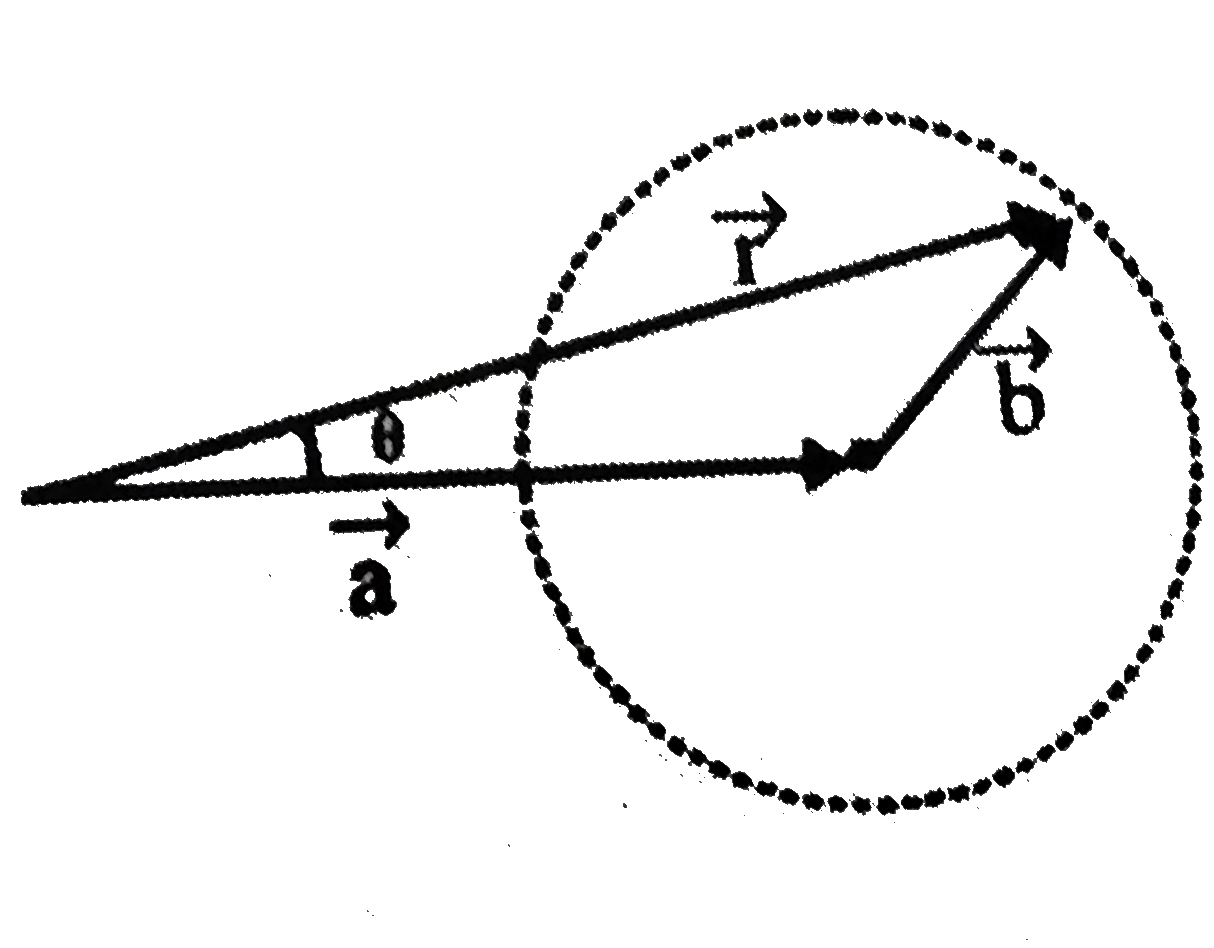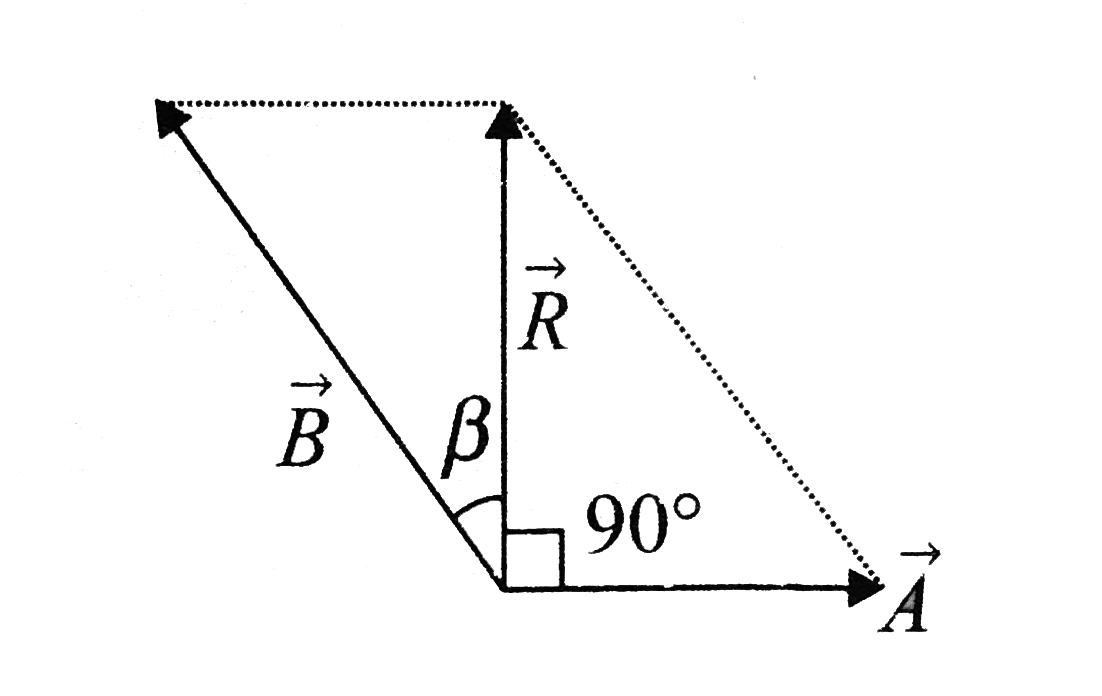Keeping one vector constant, if direction of other to be added in the first vector is changed continuously, tip of the resultant vector describes a circles, In the following figure vector →a is kept constant. When vector →b addede to →a changes its direction, the tip of the resultant vector →r=→a+→b describes circles of radius b with its centre at the tip of vector →a. Maximum angle between vector →a and the resultant →r=→a+→b is

tan−1(br)
tan−1(b√a2−b2)
cos−1(r/a)
cos−1(a/r)
The correct Answer is:A, C
 Angle between →r and →b is maximum when →r is tangent to circle.
Angle between →r and →b is maximum when →r is tangent to circle.
Topper's Solved these Questions
- BOOK - ALLENCHAPTER - UNIT & DIMENSIONS, BASIC MATHS AND VECTOR EXERCISE - Exercise (S-1)20videos
UNIT & DIMENSIONS, BASIC MATHS AND VECTOR
- BOOK - ALLENCHAPTER - UNIT & DIMENSIONS, BASIC MATHS AND VECTOR EXERCISE - Exercise (S-2)7videos
UNIT & DIMENSIONS, BASIC MATHS AND VECTOR
- BOOK - ALLENCHAPTER - UNIT & DIMENSIONS, BASIC MATHS AND VECTOR EXERCISE - Exercise (J-A)7videos
UNIT & DIMENSIONS, BASIC MATHS AND VECTOR
- BOOK - ALLENCHAPTER - TEST PAPERSEXERCISE - MATHS14videos
TEST PAPERS
- BOOK - ALLENCHAPTER - WAVE OPTICSEXERCISE - Exercise 2 (Previous Year Questions)7videos
WAVE OPTICS
Similar Questions
Knowledge Check
- Question 1 - Select One
If θ is the angle between two vectors →a and →b, then →a.→b≥0 only when
A0<θ<π2B0≤θ≤π2C0<θ<πD0≤θ≤π - Question 2 - Select One or More
If θ is the angle between two vectors →aand→b, then →a.→b≥0 only when
A0<θ<π2B0≤θ≤π2C0<θ<πD0≤θ≤π
The angle between Vectors (→A×→B) and (→B×→A) is
View SolutionTwo vectors →Aand→B lie in plane, another vector →C lies outside this plane, then the resultant of these three vectors i.e., →A+→B+→C
View SolutionIf vector →a+→b bisects the angle between →a and →b , then prove that |→a| = ∣∣→b∣∣ .
View SolutionWrite an expression for magnitude of the resultant vector .→R. of two vectors →Aand→B acting at a point. When will this resultant vector .→R. be maximum ?
View SolutionThe resultant of two vectors →A and →B is perpendicular to the vector →A and its magnitudes is equal to half of the magnitudes of vector →B (figure). The angle between →A and →B is
 View Solution
View SolutionFind the angle between two vectors →a and →b, if ∣∣→a×→b∣∣=→a.→b .
View Solution

